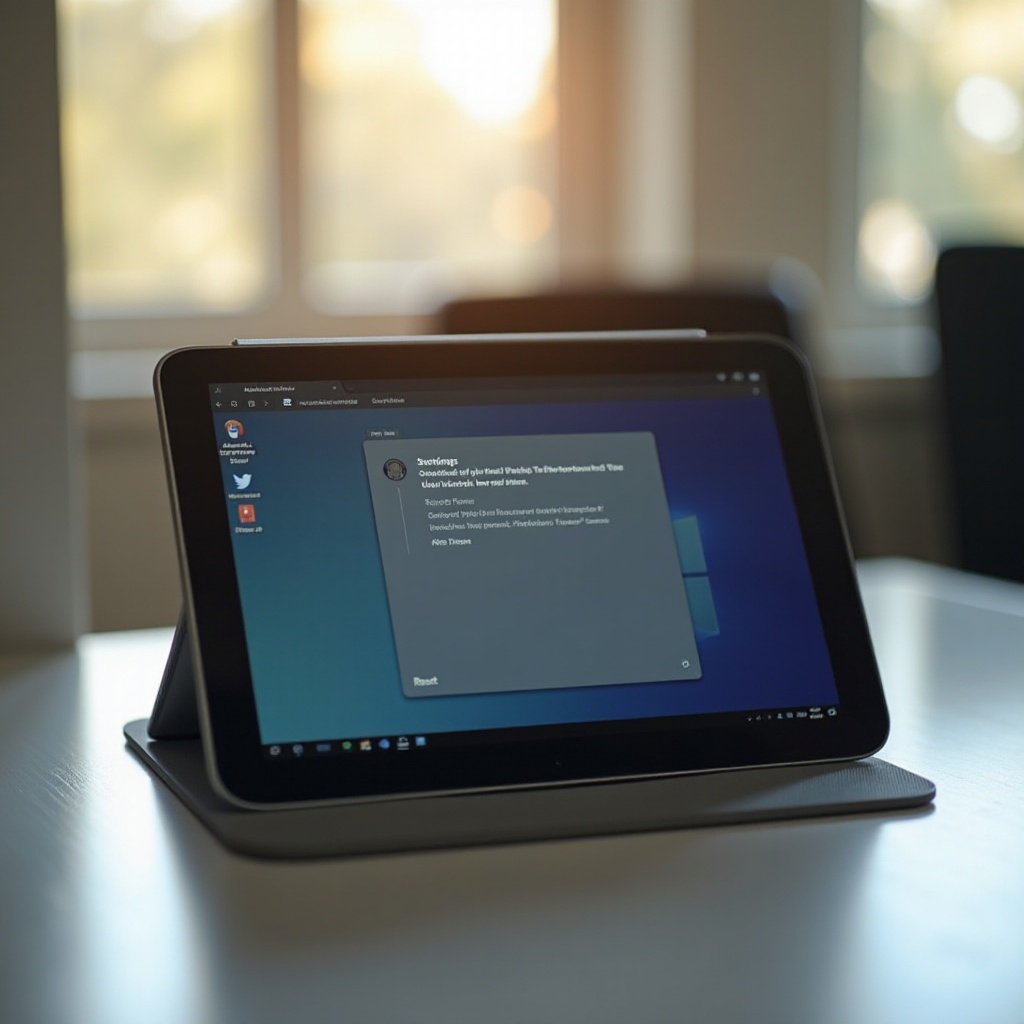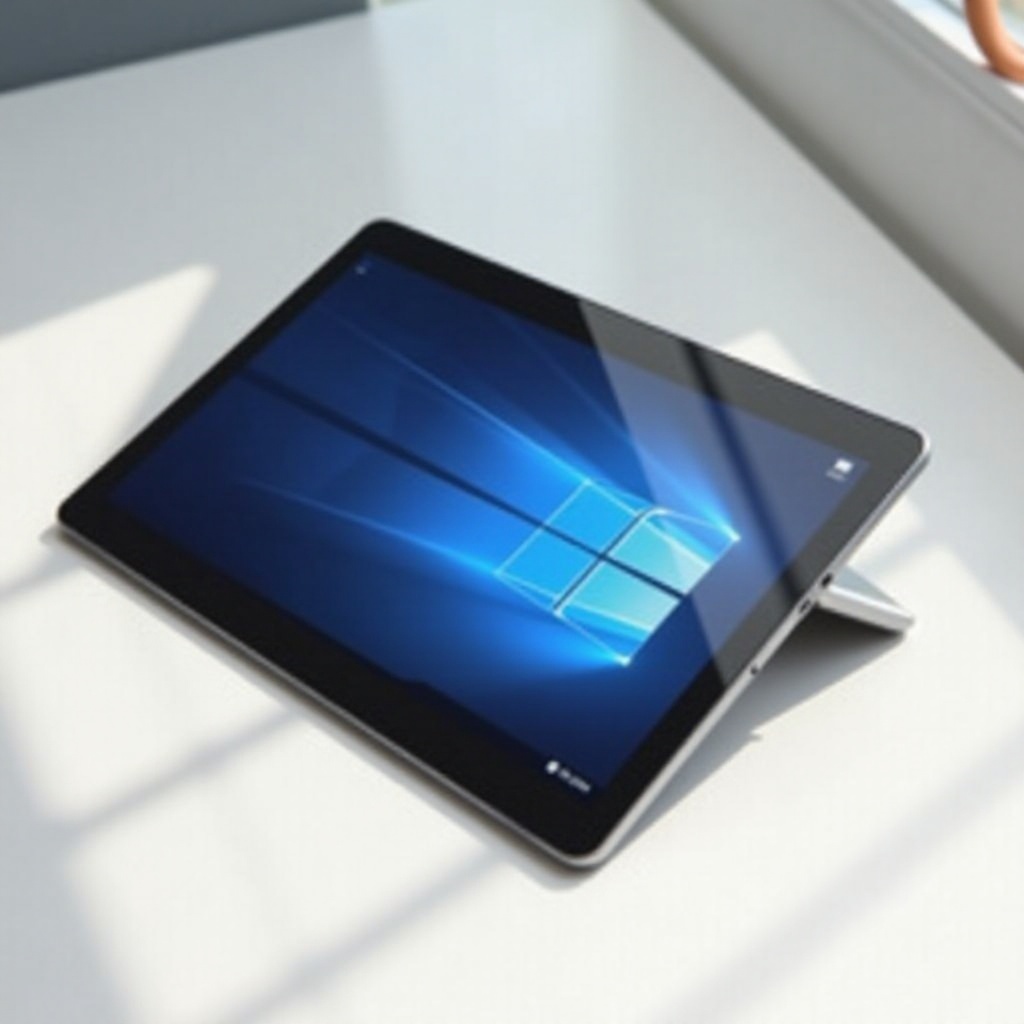How to Reset My ASUS Flip Tablet
Introduction
Resetting your ASUS Flip Tablet can be a lifesaver when encountering performance issues, glitches, or the need for a fresh start. This comprehensive guide will walk you through the different methods of resetting your device, ensuring you understand the steps, the precautions, and the solutions to common issues. Whether you need a quick soft reset or a full hard reset, this guide has you covered.

Understanding the Need for a Reset
Resetting your ASUS Flip Tablet can resolve various issues that affect performance and usability. Knowing why and when to perform a reset is crucial for maintaining your device.
Common Reasons to Reset
- Performance Issues: Over time, tablets can slow down due to accumulated data and running multiple applications.
- Software Glitches: Occasionally, apps or the operating system can behave unexpectedly, causing disruptions.
- Forgotten Password: If you can't access your tablet due to a forgotten password, a reset can help you regain control.
- Selling or Handing Over: A reset is essential to wipe personal data before selling or giving away your device.
Precautions Before Resetting
- Backup Data: Always ensure you have a backup of your important data either on a cloud service or an external device.
- Charge Your Device: Ensure your tablet is charged to at least 50% to avoid interruptions during the reset process.
- Know Your Credentials: Be ready with your Google account details as you might need to re-enter them post-reset.
Understanding these reasons and precautions helps in deciding the type of reset your ASUS Flip Tablet might need, setting a clear path for the next steps.

Soft Reset: The Quick Fix
Sometimes your tablet just needs a little push to get back on track. A soft reset is a quick solution that might just do the trick.
What is a Soft Reset?
A soft reset is similar to restarting your computer. It shuts down all processes and powers down the device without erasing any data. This method can resolve minor issues like freezing or lagging.
Step-by-Step Guide for Soft Reset
- Press the Power Button: Hold down the power button until the power menu appears.
- Select Restart: Tap on 'Restart' or 'Reboot' from the options given.
- Wait for Reboot: The device will power down and restart, which may take a few moments.
When to Use a Soft Reset
A soft reset is ideal for addressing issues like: - Unresponsive screen - Lagging or slow performance - Minor software glitches
This quick fix can often solve your problems without the need for more drastic measures, eliminating minor hitches and preparing for uninterrupted use ahead.
Hard Reset: Returning to Factory Settings
When a soft reset is not enough, you might need to consider a hard reset. This method will return your tablet to its original factory settings, wiping all data in the process.
Understanding a Hard Reset
A hard reset, also known as a factory reset, wipes all data from your device and restores it to the state it was in when you first bought it. This action is usually taken when your device has severe issues such as unresolvable glitches, forgotten passwords, or if you intend to sell or give away the tablet.
Step-by-Step Guide for Hard Reset
- Backup Data: Ensure all important data is backed up.
- Access Settings: Open 'Settings' on your tablet.
- Navigate to System: Tap on 'System > Advanced > Reset options'.
- Factory Data Reset: Select 'Erase all data (factory reset)'.
- Confirm Reset: Follow the on-screen instructions to confirm the reset.
Alternatively, if your device is unresponsive: 1. Power Off: Make sure the device is off. 2. Press and Hold Buttons: Press and hold the volume up button and power button simultaneously until the recovery mode screen appears. 3. Select Factory Reset: Use the volume buttons to navigate and the power button to select 'Wipe data/factory reset'. 4. Confirm Deletion: Move to 'Yes' and press the power button to confirm.
Importance of Data Backup
Data backup is essential to prevent the loss of important files, photos, and other vital information. Ensure to back up contacts, documents, and app data to a cloud service like Google Drive or an external storage device before performing the reset.
Understanding these procedures ensures you are well-prepared for a hard reset, making the transition as smooth as possible while safeguarding your important data.

Troubleshooting Common Issues
Resetting your tablet won't always result in a perfectly running device. Here are some common post-reset issues and quick solutions.
Post-Reset Issues
- Device Not Turning On: This can be due to battery issues or incorrect resetting procedures.
- Authentication Failure: Incorrect Google credentials might lock you out post-reset.
- Persisting Software Issues: Sometimes, resetting doesn't resolve the software issues.
Solutions and Tips
- Ensure Sufficient Charge: Charge your device if it isn't turning on and try a soft reset.
- Double-Check Credentials: Make sure you're entering the correct Google account credentials.
- Software Updates: After resetting, ensure your tablet’s software is up to date by checking for updates in the settings.
- Seek Professional Help: If problems persist, contacting ASUS support or visiting a professional technician is recommended.
These troubleshooting tips provide a guide on resolving common issues post-reset, ensuring your device operates smoothly.
Conclusion
Resetting your ASUS Flip Tablet can effectively resolve various performance issues and prepare your device for new users. By understanding when to use a soft reset versus a hard reset and taking necessary precautions, you can perform the reset with confidence and keep your device running optimally.
Frequently Asked Questions
What should I do if my ASUS Flip Tablet fails to reset?
If your tablet fails to reset, ensure it has enough charge and repeat the reset process. If it still doesn't work, seek professional help from ASUS support.
Can I reset my ASUS Flip Tablet without losing data?
Yes, a soft reset will not erase your data. However, a hard reset will wipe all data, so ensure you have backed up important information before proceeding.
How often should I reset my ASUS Flip Tablet?
Resetting should be done only when necessary, such as during significant performance issues or before handing the tablet to a new user. Regular resets are not required but can be performed on a case-by-case basis.



